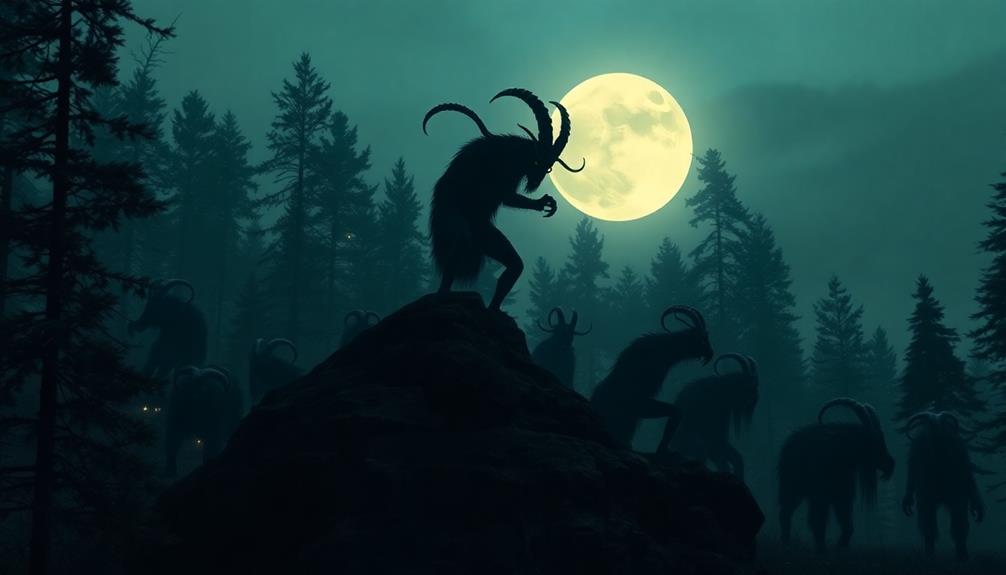Have you ever wandered through a misty forest or peered into the depths of a dark lake and wondered what might be lurking just beyond your sight? This curiosity—the draw towards the unknown—is a shared thread that unites many of us. In the vast tapestry of existence, many believe there are mysterious creatures and unknown entities, hidden just out of reach, waiting to reveal their secrets. Welcome to the captivating world of cryptozoology, where the existence of beings such as Bigfoot and the Loch Ness Monster is more than mere folklore. It is a journey into the heart of our deepest questions about nature, existence, and the thrill of discovery. Here, we will dive deep into the cryptid mysteries that have captivated hearts and minds throughout the ages, inviting you to explore the possibilities of life beyond what we know.
Key Takeaways
- The term “cryptozoology” was coined in the 1950s by Belgian zoologist Bernard Heuvelmans.
- The 1967 Patterson-Gimlin film is one of the most analyzed pieces of evidence in the field.
- Early reports of creatures like the Loch Ness Monster date back to the 6th century.
- Modern technology plays a vital role in investigating and understanding these hidden creatures.
- Organizations and communities support enthusiasts in uncovering the truth behind these legends.
Introduction to Cryptozoology
Cryptozoology delves into the study of creatures that remain shrouded in mystery due to their unproven existence. This fascinating field explores the legends and folklore surrounding these elusive beings, often termed cryptids. You might find the concept intriguing as it intertwines scientific inquiry with cultural narratives, aiming to uncover truths behind stories passed down through generations.
The allure of cryptozoology extends to various creatures that have captured the human imagination. From the legendary Bigfoot to the enigmatic Loch Ness Monster, each has provoked curiosity and debate among enthusiasts and skeptics alike. A significant aspect of this exploration involves examining the origins of these tales, which frequently highlight our desire to connect with the unknown.
Moreover, engaging with the folklore of cryptids often involves understanding the context in which these creatures were born. While some stories may be rooted in myth, their persistence in popular culture signifies a collective fascination with the possibility of beings that exist outside of our current understanding of the world.

As you journey through the realm of cryptozoology, you may discover a blend of skepticism and belief that defines this unique discipline. It encourages not just the search for proof, but also a deeper appreciation for the stories and cultures linked to their legends. This exploration opens doors to countless mysteries waiting to be unraveled.
Understanding Cryptid Mysteries and Their Impact
Cryptid mysteries have long fascinated people, weaving themselves into the fabric of cultural narratives across the globe. These creatures, often described as large and fearsome, capture the imagination and prompt discussions about biodiversity and our relationship with nature. The legends surrounding cryptids like Sasquatch, the Loch Ness Monster, and the Chupacabra significantly influence public perception, resulting in a blend of skepticism and intrigue.
Many will recognize the story of Sasquatch, rooted in indigenous lore from the Pacific Northwest. Its mainstream appeal surged in the 1950s, especially after the release of the famous Patterson-Gimlin film. Such legends not only drive tourism, especially to sites like Loch Ness, but also inspire researchers and enthusiasts to delve deeper into the unknown, highlighting the profound cultural significance of these tales.
The Chupacabra, emerging in Puerto Rico during the mid-1990s, serves as another prime example. Sightings across Latin America and the southern United States perpetuate its status as a feared predator. As perceptions around these cryptids evolve, they often shed light on broader societal concerns, including environmental awareness and conservation efforts.
The interdisciplinary nature of cryptozoology brings together elements of anthropology, zoology, paleontology, and folklore. This diversity enriches the conversations surrounding cryptid mysteries, encouraging both serious inquiry and playful speculation. As individuals nurture their curiosity, they contribute to a growing discourse that helps demystify our world and promotes engagement with ecosystems.

The Fascination with Mysterious Creatures
The lure of mysterious creatures has captured your imagination, connecting deeply with ancient myths and cultural stories from around the world. Cryptids like Bigfoot and the Loch Ness Monster spark a blend of fear, curiosity, and excitement, making them fascinating subjects for exploration and legend.
Hollywood has embraced these cryptids, turning them into iconic characters that enrich thrilling stories. Films such as “Bigfoot: The Most Famous Cryptid?” and “The Loch Ness Monster: Scotland’s Favorite” showcase the allure of these enigmatic beings, fueling your desire to learn more about their origins and places in folklore.
Across various cultures, a myriad of mythical beings share the stage with cryptids. The Chupacabra in Latin America and the Yeti in the Himalayas reflect a diverse global landscape, each contributing unique narratives to our understanding of *mysterious creatures*. In West Virginia, the 1960s ignited the legend of the Mothman, a winged figure believed to predict disasters. These compelling stories have perpetuated long-lasting legends, captivating audiences of all ages.
Scientific scrutiny invites both intrigue and skepticism regarding the existence of cryptids. Despite numerous sightings reported in diverse locales—from the vast expanses of North America to the depths of Loch Ness—research challenges claims of authenticity. The fascination surrounding cryptids often evolves into controversial discussions, as empirical evidence remains elusive. This ongoing discourse between believers and skeptics highlights a complex relationship with these legendary beings, maintaining interest among enthusiasts.
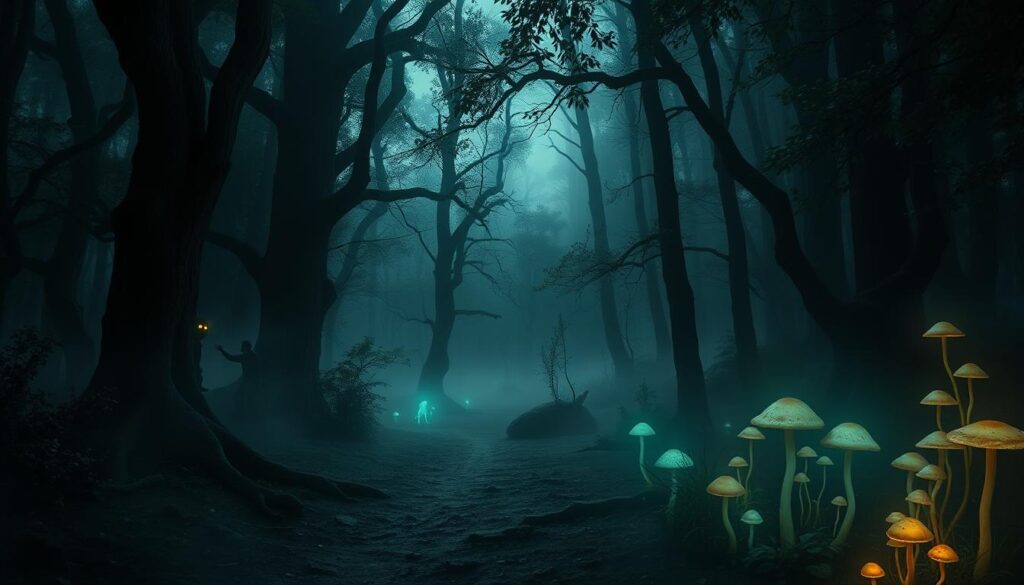
Ultimately, the passion for cryptids is fueled by its cultural stories, myths, and the quest to unravel what lies beyond conventional understanding. As you delve deeper into the world of these extraordinary beings, the intersection of belief, folklore, and personal experience continues to draw you into the enigma of the unknown.
The History of Cryptozoology
The journey of cryptozoology is rich and varied, deeply interwoven with ancient myths and evolving through the years. It reflects humanity’s unending curiosity about the unknown, laying the groundwork for a unique branch of study that continues to intrigue people around the globe.
Ancient Myths and Legends
From the serpent-like creatures of the seas to the fantastical beasts inhabiting forests and mountains, ancient myths have significantly influenced our understanding of cryptids. These stories not only provided entertainment but also served as vehicles for cultural beliefs, fears, and hopes. Understanding these ancient myths adds layers to the cryptozoology history, allowing us to trace how perception of mysterious creatures has evolved over centuries.
Evolution of the Field in the 20th Century
The 20th-century evolution of cryptozoology marked a pivotal shift from folklore to a more structured investigation of legendary creatures. With growing interest in science and exploration, cryptozoologists began to document sightings and anecdotal evidence in a systematic way. This change fostered an environment where once-mythical entities could be studied as legitimate subjects of inquiry, bridging the gap between scientific skepticism and public fascination.
Influential Figures in Cryptozoological Research
Remarkable pioneers in the field have left a lasting impact, shaping cryptozoology history through their advocacy for scientific approaches. Figures like Bernard Heuvelmans, often regarded as the father of cryptozoology, sought to categorize and analyze cryptids objectively. Another key contributor, Ivan T. Sanderson, brought a naturalist’s perspective to the subject. Their efforts significantly advanced the framework within which this intriguing field operates today, inspiring both professionals and enthusiasts alike.
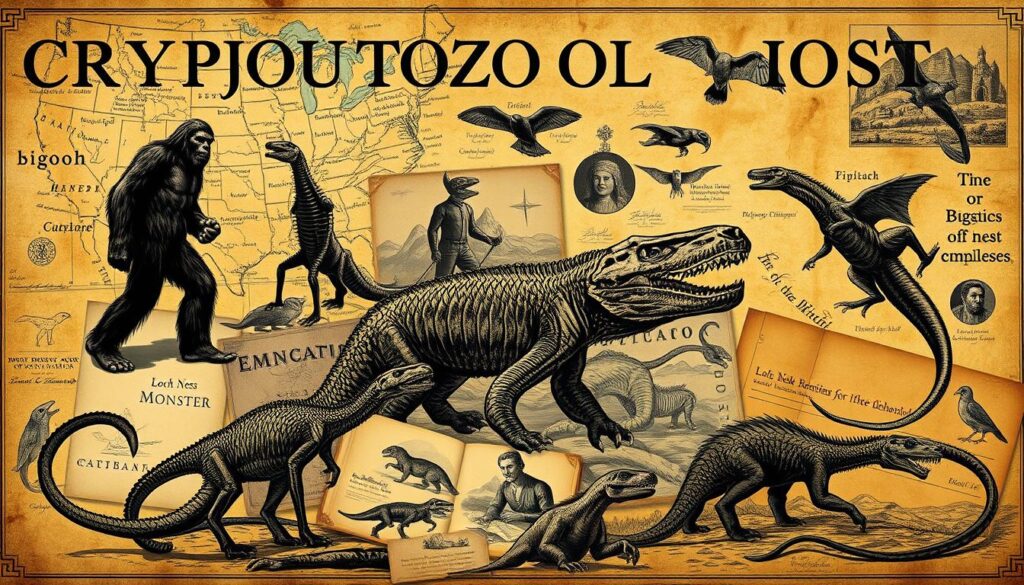
Notable Cryptids Around the World
Throughout history, various notable cryptids have captured the imagination of people across the globe. Each creature carries unique stories and sightings that contribute to the rich tapestry of folklore and mystery. Three particularly intriguing cryptids are Bigfoot, the Loch Ness Monster, and the Chupacabra. These creatures continue to evoke fascination and debate among enthusiasts and skeptics alike.
Bigfoot: The North American Legend
Bigfoot, often referred to as Sasquatch, is a legendary hominid cryptid believed to inhabit the forests of North America. Sightings date back to the early 20th century, and the iconic Patterson-Gimlin film remains a core piece of evidence fueling discussions about its existence. Many enthusiasts venture into the wilderness, hoping to catch a glimpse of this elusive creature. The lore surrounding Bigfoot speaks to the enduring desire for exploration and the unknown.
The Loch Ness Monster: Secrets Beneath the Surface
The Loch Ness Monster, affectionately known as “Nessie,” has intrigued people for generations. Alleged sightings in the deep waters of Loch Ness in Scotland give rise to a multitude of theories about this aquatic enigma. Despite extensive investigations and technological advancements, scientific proof of the Loch Ness Monster remains elusive. The mystery continues to draw visitors to the loch, eager to uncover its secrets.
Chupacabra: A Mysterious Predator
Originating from Latin America, the Chupacabra has gained notoriety as a bloodsucking creature associated with livestock attacks. Reports of sightings often describe it as a small, spiky animal or a strange canine-like creature. Various theories attempt to explain its origins, sparking widespread curiosity and concern within affected communities. The Chupacabra serves as a captivating example of how folklore can intertwine with real-world events.

The Techniques Used in Cryptozoological Investigations
Cryptozoology requires a unique set of techniques to probe the mysteries surrounding elusive creatures. These cryptozoological investigations often combine traditional methods with modern technology, making each study multifaceted and comprehensive.
Fieldwork stands at the core of these investigations, allowing researchers to collect evidence in natural habitats. Techniques such as extensive interviewing of eyewitnesses provide vital insights and accounts that might direct subsequent studies. Considerable attention is given to physical evidence collection, like footprints, hair samples, and other biological markers. Each piece of evidence can serve as a crucial clue in the quest to identify cryptids.
With advances in technology, the landscape of cryptozoological investigations has evolved. The incorporation of DNA analysis enhances researchers’ ability to understand and document varieties of life, sometimes revealing hidden species. Motion-sensitive cameras are being utilized for evidence collection, capturing unexpected glimpses of wildlife that may include cryptids. These cutting-edge techniques are essential for verifying claims and ensuring the continuity of the research.

The interdisciplinary nature of these investigations showcases a refreshing perspective on scientific inquiry. Encouraging collaboration between different fields amplifies the effectiveness of techniques deployed in the search for cryptids. Each discovery contributes not only to the body of knowledge about unknown species but also fosters a broader understanding of biodiversity and conservation efforts.
| Technique | Description | Significance |
|---|---|---|
| Fieldwork | In-depth research in natural habitats. | Enables first-hand evidence collection and observation. |
| Interviews | Engaging with eyewitnesses for firsthand accounts. | Provides context and leads for further investigations. |
| Physical Evidence Collection | Gathering biological samples like hair and footprints. | Pivotal for verifying cryptid existence and behavior. |
| DNA Analysis | Utilizing genetic research to identify species. | Reveals hidden or unknown entities through genetics. |
| Motion-sensitive Cameras | Automatically captures images of wildlife in action. | Enhances chances of documenting rare or elusive creatures. |
Challenges Facing Cryptozoologists
Delving into the world of cryptozoology presents a unique set of challenges. Researchers navigating this field encounter numerous roadblocks that can hinder their pursuit of evidence and understanding about legendary creatures. From scientific skepticism to pressing funding issues, these hurdles require careful consideration, particularly regarding ethical considerations that impact local ecosystems and communities.
Skepticism from the Scientific Community
One of the most significant challenges cryptozoologists face is the skepticism of the scientific community. Many scientists question the legitimacy of cryptozoology, often citing the lack of empirical data and rigorous methodology. This scientific skepticism creates an environment where valid investigations struggle for acknowledgment. Critics argue that the discipline sometimes operates on a foundation of folklore rather than science, raising doubts about the reliability of the claims made in this mysterious field.
Funding and Ethical Considerations
Securing sufficient funding remains a major obstacle for cryptozoological research. Unlike more established scientific fields, funding opportunities for cryptozoology are limited, complicating the execution of thorough investigations. Furthermore, ethical considerations become intertwined with these financial hurdles. Researchers must approach their work with respect for local ecosystems and cultures, ensuring that their methods do not harm existing wildlife.
| Challenge | Description |
|---|---|
| Scientific Skepticism | Doubt from the scientific community regarding the legitimacy and methodology of cryptozoology. |
| Funding | Limited financial resources make it challenging to conduct comprehensive research. |
| Ethical Considerations | Need to balance scientific curiosity with respect for ecosystems, local cultures, and animal welfare. |
This landscape emphasizes the importance of transparency and integrity in the field. As you explore cryptozoology, consider how the blend of skepticism, funding uncertainties, and ethical considerations shapes the overall narrative of these enigmatic creatures.

Cryptid Mysteries: Unsolved Enigmas in Science
Unsolved enigmas have always captivated the human imagination, particularly within the realm of cryptid mysteries. Numerous cases persist, remaining mysteries that invite both curiosity and skepticism. The events surrounding the Dyatlov Pass incident in 1959, where nine ski-hikers died under mysterious circumstances in Russia, exemplify how such enigmas can fuel ongoing speculation and analysis.
The realm of cryptid mysteries often intersects with phenomena that challenge conventional understanding. For instance, in December 2016, reports emerged of a CIA officer experiencing unexplained symptoms while stationed at the American Embassy in Havana. The situation escalated, leading to a series of similar cases impacting Americans and Canadians, ultimately unveiling research gaps in neurobiology and environmental health. By late 2018, over 26 Americans and 13 Canadians were experiencing illness linked to strange noises in their surroundings. Such cases reveal significant research gaps that beg for scientific exploration.
Another captivating case involves the infamous Mary Celeste, which departed New York in 1872 under the command of Captain Benjamin Briggs. The ship was later found adrift with no sign of her crew, presenting an unsolved enigma that has puzzled maritime historians for decades. This mystery, along with many others, sheds light on the gaps in our understanding of human behavior under extreme conditions. Cryptid mysteries like these highlight the importance of continued inquiry into our environment and the phenomena within it.
The Bermuda Triangle serves as another example, where a boat with 20 passengers disappeared in 2020, prompting extensive searches without any clues regarding their fate. Such occurrences not only fascinate enthusiasts but underline the essential nature of scientific exploration to uncover truths that lie hidden beneath the surface.
Ultimately, these unsolved enigmas remind you of the mysteries yet to be explored, reinforcing the significance of ongoing research in these intriguing phenomena. The importance of biodiversity and species conservation cannot be understated, as various species have historically provided resources for medicine and other essential aspects of human life. As scientists continuously strive to fill research gaps, the hope remains that future endeavors will bring clarity to these enduring cryptid mysteries.

| Cryptid Mystery | Details |
|---|---|
| Dyatlov Pass Incident | Nine ski-hikers died mysteriously in 1959, sparking ongoing investigation. |
| Havana Syndrome | A series of mysterious illnesses affected CIA officers beginning in 2016. |
| Mary Celeste | An abandoned ship found in 1872 with no crew aboard, a longstanding maritime mystery. |
| Bermuda Triangle Disappearance | A boat with 20 passengers vanished in 2020 without a trace after extensive searches. |
The Role of Technology in Cryptozoology
Technology plays a vital role in reshaping how cryptozoologists approach their field. From DNA analysis to the deployment of advanced equipment like drones and camera traps, these innovations enhance the search for elusive creatures. The combination of scientific methods and cutting-edge technology offers new perspectives and tools for evidence collection, driving cryptozoology into a more scientific frontier.
How DNA Analysis Reshapes Our Understanding
Advancements in DNA analysis allow researchers to analyze biological samples more precisely. This enables scientists to identify known species while exploring the possibility of uncovering unknown ones. By examining environmental DNA collected from areas reputed to be home to cryptids, you can gather vital evidence that supports or refutes sightings and lore. This technique significantly increases the rigor of cryptozoological research, offering hope for more substantial findings in the future.
Using Drones and Camera Traps for Evidence Collection
The advent of drones and camera traps has transformed evidence collection methods in cryptozoology. Drones equipped with high-resolution cameras facilitate large-scale surveys of remote wilderness, capturing footage that may reveal signs of cryptids. This non-invasive approach respects their habitats while improving the efficiency of data collection.
Camera traps, strategically placed in areas with frequent cryptid sightings, utilize motion sensors to document animal activity. These devices prove invaluable, contributing quantitative data to the ongoing exploration of creatures like Bigfoot. Furthermore, thermal imaging and sound analysis through specialized microphones offer additional ways to detect creatures during night expeditions. With these advancements, the realm of cryptozoology expands further into the scientific arena.

The Socio-Cultural Relevance of Cryptids
Cryptids occupy a unique space in the socio-cultural fabric of many communities. These mysterious creatures inspire fascination and curiosity, often becoming integral parts of local folklore and storytelling. The cultural impact of cryptids can be seen through various forms of media, including stories, films, and television shows, as noted by T.S. Mart, illustrating their significance in shaping collective identities.
Many communities draw upon legends of cryptids to forge connections among members. For instance, Native American tribes have long shared oral histories featuring beings such as Bigfoot and the Loch Ness Monster. J. Mullis points out that these tales serve not only to entertain but also to pass down valuable cultural traditions and beliefs. The socio-cultural relevance extends beyond mere fascination, as the shared narratives reinforce cultural bonds and foster a sense of belonging.
The mid-20th century witnessed a surge in cryptid sightings, influenced in part by the rise of television and fantasy-based media. The popularity of these stories likely contributed to the continued intrigue surrounding cryptids. At the same time, some researchers have sought to debunk these myths. In “Abominable Science,” D. Loxton and D.R. Prothero highlight the absence of scientific evidence for creatures like the Loch Ness Monster, prompting discussions on the fine line between folklore and fact.
The table below showcases various well-known cryptids and their socio-cultural relevance:
| Cryptid | First Sighting | Significance | Associated Folklore |
|---|---|---|---|
| Bigfoot | 1958 (Bluff Creek, California) | Community identity in North America | Legends shared by Native American tribes |
| Mothman | 1966 (Point Pleasant, West Virginia) | Symbol of local lore; tied to historical events | Linked to the Silver Bridge collapse |
| Chupacabra | 1995 (Puerto Rico) | Growing interest in Latin American folklore | Stories of livestock exsanguination |
| Jersey Devil | 18th Century | Inspiration for local myths and media | Various documented sightings |
| Skunk Ape | 1960s (Florida) | Regional cultural identity, especially in the Everglades | Noted for its pungent odor and elusive nature |
Through the lenses of socio-cultural relevance and folklore, cryptids resonate deeply within communities. They bridge the gap between myth and reality, serving as a compelling source of inquiry that both entertains and educates. With their rich histories and connections to cultural memory, cryptids continue to captivate the imagination of many.

Collaboration Between Cryptozoology and Mainstream Science
The intersection of cryptozoology and mainstream science presents a unique landscape for exploration. Although cryptozoology often remains on the fringes, the potential for collaboration enriches both fields. Traditional scientific approaches combined with cryptid studies could lead to exciting discoveries, particularly as researchers seek to integrate diverse methodologies.
Bridging the Gap: Integrating Different Approaches
Efforts to bridge the gap between cryptozoologists and mainstream scientists open doors for innovative research. With a focus on collaboration, scholars can work in harmony with cryptozoologists, employing scientific principles to study unidentified species. This integration allows for:
- Joint DNA analysis initiatives that enhance the genetic understanding of cryptids.
- Knowledge sharing between ecologists and cryptozoologists, leading to new insights into habitat preservation.
- The establishment of ethical guidelines to respect local cultures and wildlife, fostering a collaborative spirit.
Future Prospects for Research and Discoveries
The future prospects for both fields seem promising as technology advances and skepticism begins to wane. With increased interest in their correspondence, cryptozoologists can expect more legitimacy in their studies. Potential areas for development include:
- Utilizing advanced imaging technology to capture evidence of elusive beings.
- Investigating historical accounts and local folklore alongside scientific methods.
- Collaboration with environmental scientists to highlight conservation needs in biodiverse regions.

In summation, collaboration between cryptozoology and mainstream science is essential to this ongoing journey. As ethics and integration improve, the opportunities for new discoveries skyrocket, potentially uncovering secrets behind creatures once thought to be mere myths.
Personal Accounts and Eyewitness Testimonies
Personal accounts and eyewitness testimonies play an essential role in the realm of cryptozoology. These narratives provide a wealth of anecdotal evidence that fuels interest and ongoing investigations into cryptid sightings. Although some may question their reliability due to their subjective nature, these accounts are often the first clue to uncovering the mysteries surrounding these elusive creatures.
For example, reports of a creature estimated to be 60-70 feet long have captured attention and speculation. Eyewitnesses describe its dorsal fins as towering between 8-10 feet, jagged with chunks missing—a thrilling detail that has intrigued both enthusiasts and skeptics alike. Over a span of 6-7 minutes, the creature was observed surfacing near a ferry, suggesting a sustained presence that further adds to its mystique.
The rich tapestry of folklore among native Alaskans includes legends of a gigantic cryptid that roams the waters around Kodiak. This longstanding belief showcases how personal accounts become woven into cultural narratives and shape our understanding of cryptid sightings. Similarly, the Minnesota Iceman, a unique figure encased in ice, has appeared across various locations in the United States, garnering numerous eyewitness testimonies that lend credence to the enigma.
Eyewitness descriptions of creatures such as the Wendigo, reported to stand as tall as 15 feet with glowing eyes, further illustrate the fervent details individuals provide. Minnesota has amassed hundreds of accounts of Bigfoot, with sightings dating back to 1908. Locations such as Lake Pepin have had reports of a serpent-like creature known as Pepie since as early as 1871, adding an extra layer of intrigue to these personal narratives.
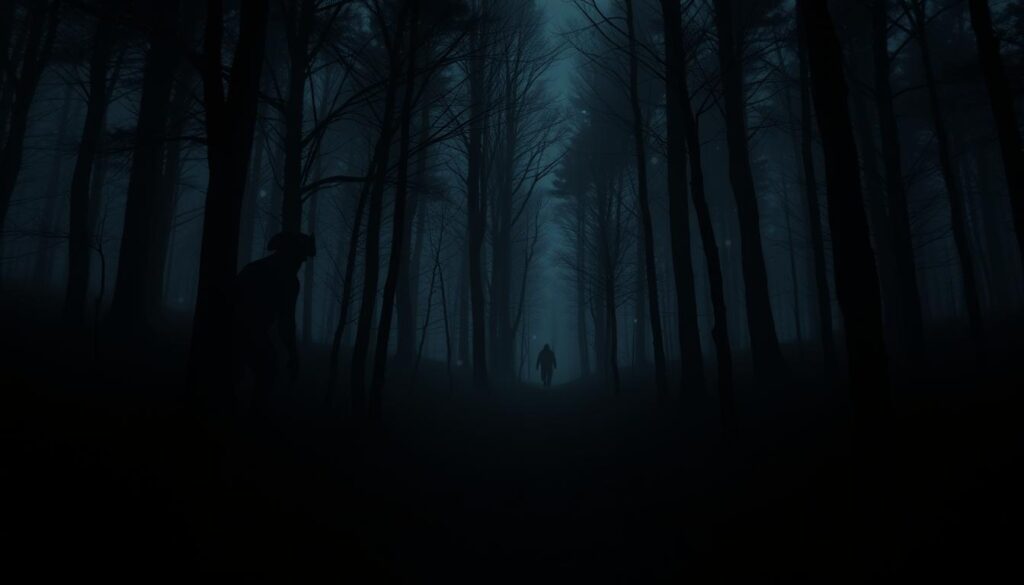
The Minnesota Dogman presents an intriguing challenge to investigators. Eyewitness descriptions depict it as a bipedal creature ranging from 7 to 9 feet tall. Despite a plethora of reported sightings, physical evidence remains scarce. A lack of independent verification for claims related to the Dogman raises questions about confirmation bias, where individuals may misidentify known creatures such as bears or large dogs in the heat of the moment.
These personal accounts, while sometimes controversial, are invaluable to the ongoing quest to understand the mysteries of cryptids. They propel investigations, challenge perceptions, and ignite imaginations regarding the enigmatic beings lurking within our folklore.
Exploring Cryptid Habitat and Conservation Efforts
Engaging in habitat exploration reveals the intriguing ecosystems that cryptids inhabit. Investigating these elusive areas allows for a better understanding of the delicate balance between mystery and reality in environmental conservation. Cryptids, often misunderstood, play a role in biodiversity. Your exploration can illuminate how these creatures connect with various species and their habitats.
Conservation efforts aimed at protecting these environments significantly impact ecological health. By safeguarding the locales where cryptids are said to reside, one benefits not only the creatures themselves but also the entire ecosystem. Without such efforts, the ongoing degradation of these habitats threatens numerous species and disrupts intricate ecological systems.
For instance, many believe that the legend of Bigfoot, often spotted in forests across North America, exemplifies how local cultures intertwine with biodiversity. These habitats serve as critical biomes for wildlife, making protection efforts paramount. Additionally, the increasing temperature of regions like Loch Ness prompts concerns regarding the species diversity in freshwater ecosystems. You may be surprised to discover how threats such as climate change can alter the natural environment, affecting both known species and potential cryptids.

Understanding the connection between cryptids and their habitats emphasizes the importance of ecological impact in conservation. Many humanoid legends, such as that of the Chupacabra, highlight the necessity of protecting these ecosystems from further encroachment. Engaging in conservation initiatives increases public awareness and encourages communities to actively participate in habitat preservation.
| Cryptid | Habitat | Impact of Conservation Efforts |
|---|---|---|
| Bigfoot | Forested Regions | Preserves biodiversity and prevents habitat destruction. |
| Yeti | Himalayan Mountains | Helps maintain delicate alpine ecosystems. |
| Loch Ness Monster | Loch Ness | Protects freshwater biodiversity against pollution. |
| Chupacabra | Latin America and Southern U.S. | Supports community efforts in wildlife protection. |
Through your commitment to habitat exploration and supporting conservation efforts, advocating for biodiversity becomes a meaningful pursuit. The relationship between cryptids and ecological stewardship highlights how exploration can lead to positive changes within our environment. Engaging in these areas fosters appreciation and respect for the world’s mysteries while ensuring that future generations also benefit from these vital ecosystems.
The Future of Cryptozoology and Cryptid Exploration
The future of cryptozoology presents an exciting landscape defined by exploration and scientific advancements. As technology continues to evolve, researchers gain access to innovative tools that enhance their ability to investigate cryptid sightings and expand their knowledge of uncharted territories. Modern methodologies, including DNA analysis and remote sensing technologies, transform how studies are conducted. This not only improves the quality of evidence collected but also opens up new pathways for exploration.
In recent years, citizen science has taken the forefront in encouraging broader participation in cryptozoological research. Platforms like the Bigfoot Field Researchers Organization serve as crucial resources, allowing enthusiasts to share findings and collaborate on investigations. This community-driven approach underscores the research potential of citizen involvement, fostering a collective effort toward understanding our elusive subjects.
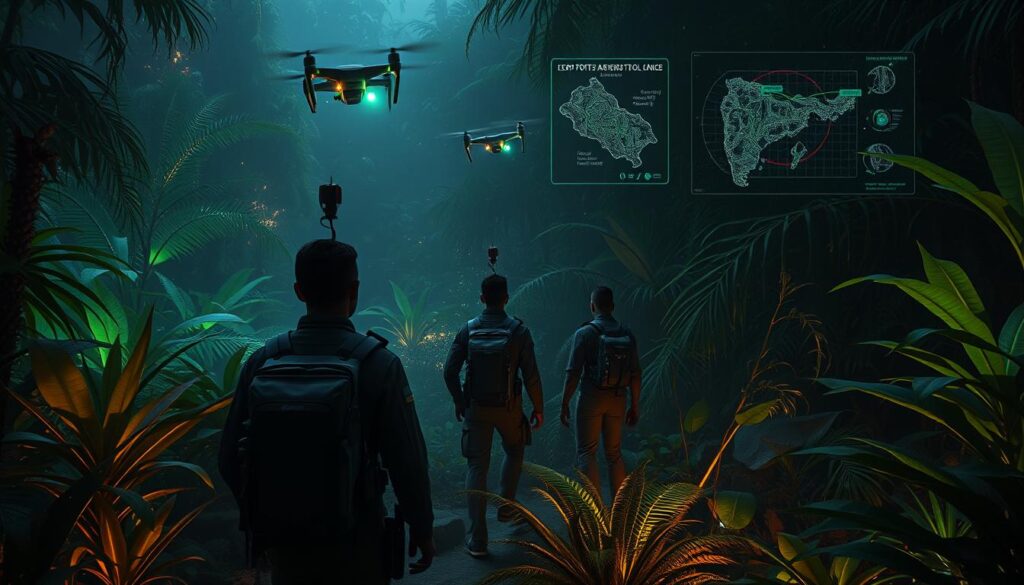
As you look towards the advancements in this field, consider the ongoing efforts to locate creatures long thought extinct, such as the Tasmanian Tiger. With numerous expeditions still taking place in Tasmania and mainland Australia, the prominence of cryptids in both scientific and cultural spheres remains strong. The possibility of discovering new flora and fauna exists alongside the thrill of encountering legendary beasts, underscoring the dynamic interplay between mythology and biology.
The continuous discovery of approximately 18,000 new species each year, albeit mostly small or less publicized, signals the ongoing need for exploration. Notable finds, like the saola, emphasize that what begins as a cryptid can sometimes lead to groundbreaking scientific revelations. The increasing interest in deep-sea ecosystems and even cybersecurity presents new realms for exploration. As digital creatures, much like the concept of creepypasta, thrive online, you can see how the frontier of cryptozoology might expand into both terrestrial and theoretical domains.
| Exploration Area | Research Potential | Notable Discoveries |
|---|---|---|
| Forests | Identifying rare species | Saola (1992) |
| Oceans | Discovering deep-sea life | Giant Squid sightings |
| Remote Habitats | Tracking elusive creatures | Tasmanian Tiger (expeditions ongoing) |
| Digital Landscape | Investigating myth-based phenomena | Creepypasta culture |
The future of cryptozoology lies at the intersection of exploration, scientific innovation, and an ever-growing enthusiasm for the unknown. As research advances, you might find that the allure of cryptids evolves into a more profound understanding of the biodiversity surrounding us, inviting anyone with curiosity to partake in this fascinating journey.
Benefits of Understanding Cryptid Mysteries
Exploring cryptid mysteries offers numerous benefits that extend well beyond mere fascination. Engaging with these enigmatic creatures enhances your understanding of folklore and promotes ecological awareness. When you delve into cryptid lore, you spark curiosity about the environment where these legendary beings are said to dwell.
Cryptids like Bigfoot, the Loch Ness Monster, and the Chupacabra serve as portals to scientific discovery. Investigating these creatures often leads researchers to examine habitats, ecosystems, and conservation efforts in a new light. For instance, the Pacific Northwest’s temperate rainforests, often associated with Bigfoot sightings, harbor a rich biodiversity worth protecting.
- Enhances scientific inquiry: The pursuit of understanding these creatures stimulates research methodologies that may uncover new scientific insights.
- Promotes conservation: Fascination with cryptids can drive conservation efforts, protecting endangered habitats tied to their legends.
- Encourages community engagement: The stories of these creatures foster local traditions and bring communities together for sharing experiences and knowledge.
Through this lens of exploration, you gain a greater appreciation for nature’s mysteries and the interplay between myth and reality. By encouraging curiosity and a willingness to learn, the study of cryptids can lead to a deeper level of understanding and respect for our environment.
Conclusion
In conclusion, the journey into cryptid mysteries reveals not only the wonders of the natural world but also the importance of exploration that drives human curiosity. With over 20 lake monsters reported in Canada and legends deeply rooted in indigenous cultures, it becomes clear that these tales foster a sense of connection to our environment. Engaging with the narratives surrounding these mysterious creatures enriches our understanding of history and anthropology while highlighting cultural significance.
As technological advancements continue to evolve, including innovations like drones and environmental DNA analysis, the potential for discovery in cryptozoology expands significantly. Future insights into the enigmatic beings across the globe may lead to groundbreaking findings that bridge folklore and science. Each new expedition provides an opportunity for environmental awareness, ensuring that as we explore, we also commit to preserving the delicate ecosystems that harbor these elusive residents.
Your journey into the world of cryptid mysteries is just beginning. Every legend holds the promise of untold stories, reminding you that exploration remains a vital aspect of the human experience. As we uncover the truth behind these myths, the allure of the unknown will continue to spark your adventures, igniting a passion for the fascinating and often bewildering creatures that inhabit our planet.






